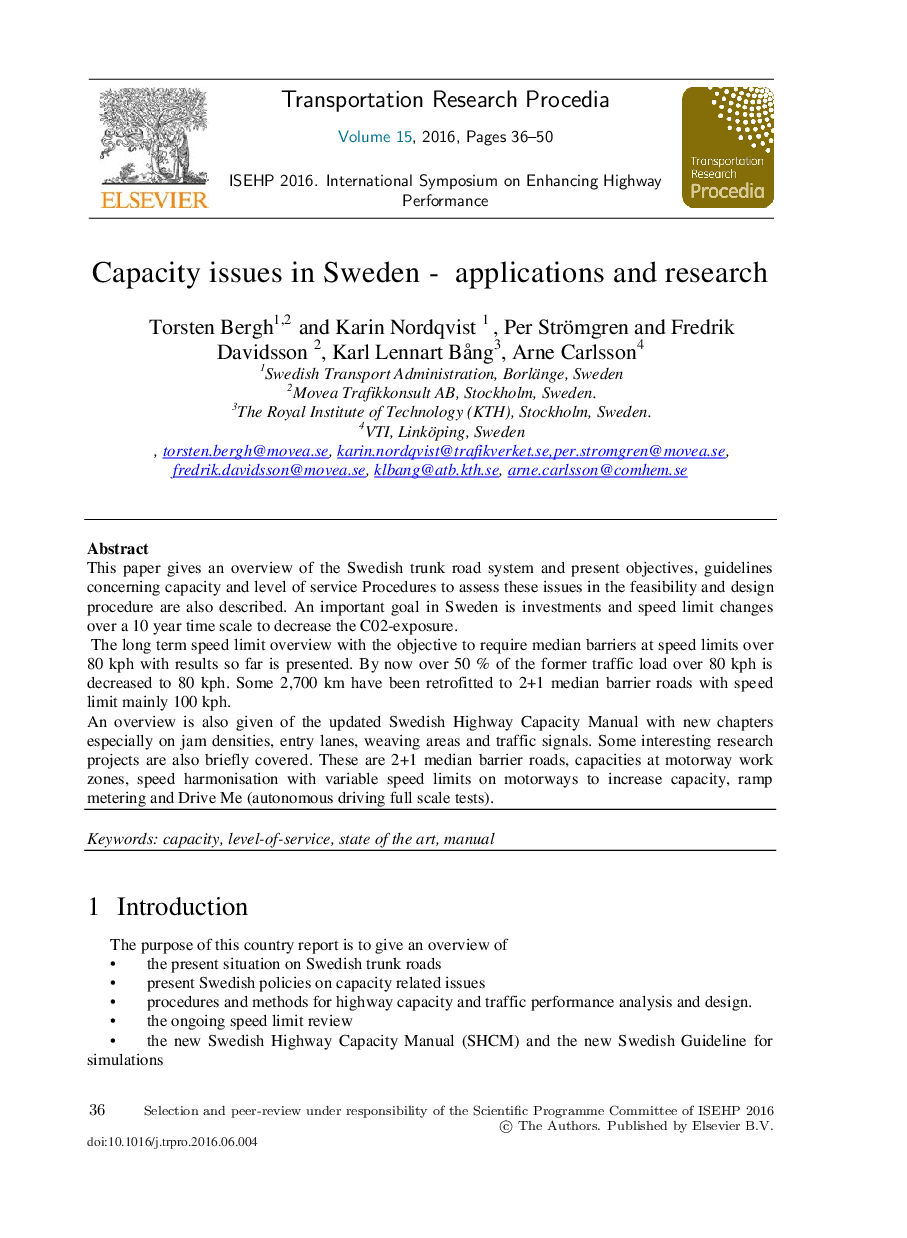| کد مقاله | کد نشریه | سال انتشار | مقاله انگلیسی | نسخه تمام متن |
|---|---|---|---|---|
| 1106095 | 1488280 | 2016 | 15 صفحه PDF | دانلود رایگان |
The Swedish Transport Administration (STA) is responsible for rural roads and major urban through roads, all together some 100 000 km. In 2013 30% of the yearly mileage is produced on some 2 000 km motorways, normally with posted speed limit 110 kph, and 14% on some 2700 km 2+1-barrier roads normally with 100 kph. All investment projects on state roads are assessed in a stepwise procedure including legal decisions in the feasibility and preliminary design stages as well as in a parallel socio- economic planning procedure. The STA official methodology software EVA is used to estimate life-cycle-cost analysis (LCC). Parameters such as value of time, accident costs, traffic growth and interest rates are standardized and regularly updated by STA. Travel time effects are to be estimated using the Swedish Highway Capacity Manual (SHCM) with an average passenger car vehicle hour time value of 171 SEK/hour (2010).A new edition of SHCM was published in 2014 based mainly on the METKAP-project. The paper gives an overview of up-dates such as speed-flow relationships for alternative cross-sections and speed limits, capacity procedures for weaving sections and capacity estimates in traffic signals with “shared lanes”.New Swedish speed limits for rural as well as urban roads were introduced in 2008 making it possible for road authorities also to use speed limits 40, 60, 80, 100 and 120 and not only the old 30, 50, 70, 90 and 110 km/h were introduced 2008-2009. New speed limit guidelines based on regional accessibility and development, environmental impact, traffic safety and driver acceptance were published. The overview is a long lasting procedure. Recent results are presented especially for the major target not to accept normal two-lane roads with speed limit over 80 kph. More than 50% of the two lane 90 and 100 kph network has been decreased or retrofitted to 2+1.A number of studies on speed and capacity on 2+1-roads have been conducted lately including effects of closing overtaking lanes in peak periods. A number of investment projects are also implemented with longer 1+1-sections with some efforts to predict speed and capacity behaviour. Efforts have also been made to estimate disturbance levels due to different types of break downs. An overview of findings is presented.An interesting project (Dukat) has developed capacity models for maintenance operations on motorways. The project includes a major full scale test of the model. Results are presented.A new Motorway Control System with varying speed limits has been implemented on the E4 between Stockholm and Södertälje. Capacity and level-of-service effects based on a pre/ater study are presented showing positive effects.The STA is also working with partly new formats to present the capacity situation in the state road network based on objectives for “usefulness” and “robustness”. These measures and results reported are also presented.
Journal: Transportation Research Procedia - Volume 15, 2016, Pages 36–50
